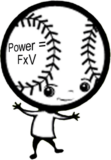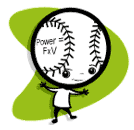The most important long-term objective of the pitcher is to stay healthy. The more he knows about the pitching motion, and what his body is supposed to be doing, the longer he will be able to extend his pitching career.
Test yourself on the following questions:
For the coach:
- Do you know what parts of the pitcher’s body should move faster if he wants to throw harder?
- Do you know how he gets from his rear leg to his front leg?
- Do you know what type of running a pitcher should do to help him generally be a more explosive athlete?
- For acceleration of the ball, what moves first, the shoulder or the elbow?
For the pitcher:
- Are your shoulders the same height?
- Does your pitching arm hang longer?
- Do you know why questions 4 & 5 are so important
- Do you strengthen the rear of your pitching shoulder at least 3 times per week?
- Do you do any exercises to keep your elbow healthy?
- Have you been free of injury for at least one year?
- Do you know the connection between wrist strength and elbow health?
For the strength coach:
- Do you know which muscles are the most active in the curveball…the fastball?
- Do you know which muscle, without targeted training, is most likely to atrophy in the pitcher?
- Do you know what muscle is most active from stride-foot contact to ball release?
Whether you are a pitcher, a pitching coach, or a strength coach, I can help you be better at what you do…and together, we can save more pitchers.
Call me to discuss the possibilities.
Answers
For the coach:
- rotation of the pelvis, lower trunk, upper trunk/shoulder girdle should occur faster and with better separation. This will, in turn, impart more force to the rotation of the shoulder. The shoulder receives its force from the lower body and trunk rotation.
- hip abduction of the rear hip
- intervals of durations lasting less than 10 seconds. Repeats should be done with full recovery between bouts to allow for full-out performances.
- the elbow begins to straighten just prior to medial rotation of the shoulder
For the pitcher:
Question #3:
- these postural aberrations can be symptoms of a weakness through the scapular musculature which can have a negative effect on the shoulder and elbow tissues.
Question #7
- the muscles of the fingers and wrists insert into the elbow and are very often the cause of elbow pain due to lack of proper strength and conditioning
For the strength coach:
fastball: brachioradialis and pronator teres;
curveball: extensor carpi radialis brevis and longus during acceleration)
infraspinatus hip extensors of stride leg, eccentrically contracted during rotation to segments towards plate, acceleration of ball, and follow-through

